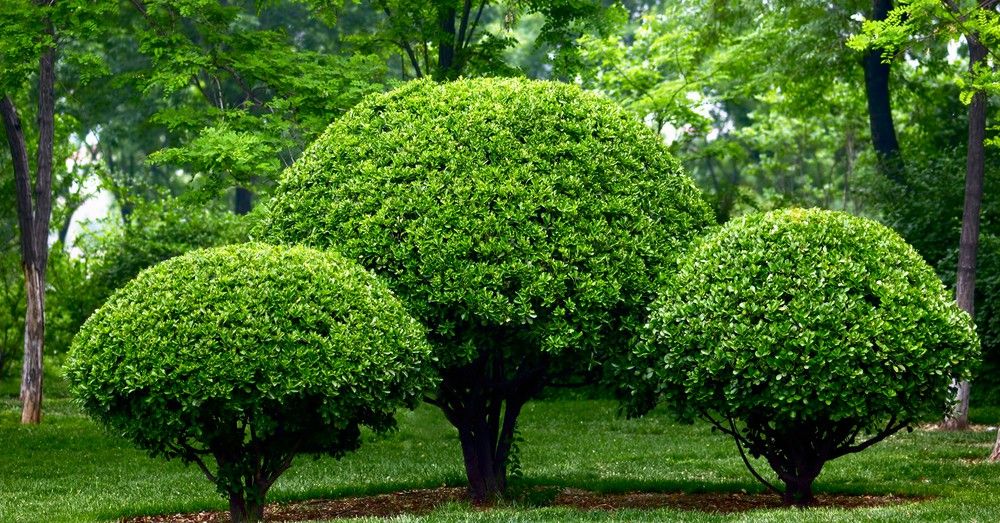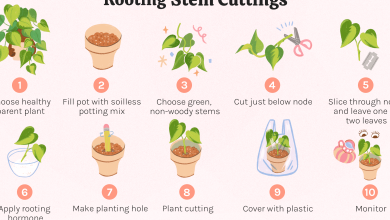Prune bushes and trees in July


Surely among the summer gardening tasks you will find a reference to pruning shrubs and fruit trees. A task that we have to carry out in these months, but keeping in mind something very important: summer pruning is not a severe pruning but, fundamentally, a pruning to give shape. An aspect that we want to underline first since, if we exceed the time of pruning bushes or trees at this time of year, we can go bankrupt.
Keep in mind that it is in summer when many of these shrubs and fruit trees are in full vegetative growth, so pruning can spoil their growth. In addition, pruning should never be done on very hot days (since the wound that we inflict on the plant will not be able to heal properly) so, if we live in a very hot area, we will have to wait until September.
So how to prune bushes and fruit trees in summer? In two simple ways: on the one hand, being clear that the pruning of these months is only to maintain the shape of the plant; on the other, knowing the peculiarities of each style of bush and fruit before considering applying scissors to them.
Let’s see how to prune some of the most common shrubs and trees in gardens.
PRUNING TREES IN SUMMER
On the one hand, we will see how to prune ornamental trees. Although they will already be formed since we planted them (it is common to find them already prepared in this aspect), if their growth has been significant and they bother us, we can cut them slightly (eliminating only those parts of the branches that may pose a danger and leaving the most important pruning, of stronger branches, for autumn).
If what we have in our garden are fruit trees, we will have to completely reject any pruning task.
PRUNING OF SHRUBS AND CLIMBERS
Here we have to make a difference. For one thing, ornamental shrubs may need a little pruning to maintain their shape. However, we have to be careful if we are dealing with spring-flowering shrubs: it will be now when the buds that will bloom next year are lodged in their branches, so if we cut them we will be eliminating the flowering of the following spring. Hence, rather than making a deep cut, we dedicate ourselves only to doing a maintenance pruning that eliminates those pieces of new branches that break the shape of the bush. In the case of ornamental shrubs that bloom in summer, we will have to wait until winter to prune them.

In the case of climbers, now is the time to find numerous stems that break the general harmony of the plant (something that occurs especially in species such as Glycine, Ivy or Jasmine). If our climber already has the shape we want, the ideal is to prune them to prevent the climbing plant we have from gaining more volume. In case we want to take advantage of its growth, the ideal is that more than pruning we guide those new stems towards the area we want. If we have to carry out a more important pruning, we will have to wait until February (when the night frosts begin to be softer).
If our climbing plant is a Rosal, it is important to contemplate its specific care. Or, what amounts to the same thing, forgetting about real pruning to limit it to removing only the withered flowers (with a view to giving the plant the strength to continue flowering for the rest of the summer). In case you have any questions, here you can see some of our tips for caring for the rosebush in bloom:
If there is a Rodondendro or Madroño in our garden, we will directly forget to prune (neither in summer nor at any other time of the year, especially when they are still young, except to remove old or diseased branches).
In addition to taking these peculiarities into account when pruning bushes and trees, it is important that before carrying out this task we are not only sure that we have everything necessary to prune (visit our selection of pruning tools here) but also that we review them to check that they have sharp and clean edges (we can simply clean them with alcohol).
Two important factors so that the cut is resounding and clean, and we avoid inflicting any damage on the plant (twisting the branch to remove it or tearing it, to give two examples).

![Photo of How to Plant Hibiscus in your Garden: [Complete Guide]](https://www.complete-gardening.com/wp-content/uploads/2022/08/how-to-plant-hibiscus-in-your-garden-complete-guide-390x220.jpg)
![Photo of Lantana Cuttings: [Grafts, Time, Rooting and Planting]](https://www.complete-gardening.com/wp-content/uploads/2022/08/lantana-cuttings-grafts-time-rooting-and-planting-390x220.jpg)
![Photo of Planting a Banana: Complete Guide [Answer to All Your Questions]](https://www.complete-gardening.com/wp-content/uploads/2022/08/planting-a-banana-complete-guide-answer-to-all-your-questions-390x220.jpg)
